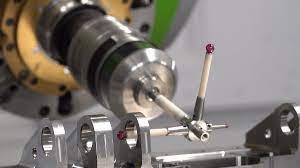CNC machining, short for Computer Numerical Control machining, has revolutionized the manufacturing industry with its precision and automation. While traditional CNC machines have been widely adopted, the integration of optical systems has taken CNC machining to the next level. In this article, we'll delve into the world of optical systems in CNC machining, exploring their applications, advantages, and how they contribute to achieving unparalleled precision in manufacturing.
Understanding Optical Systems in CNC Machining
Optical systems in CNC machining refer to the use of advanced optical technologies to enhance the precision, speed, and accuracy of machining processes. These systems typically involve the integration of cameras, lasers, sensors, and other optical optical systems CNC machining into CNC machines, allowing for real-time monitoring, measurement, and control of machining operations.
Applications of Optical Systems in CNC Machining
- Tool and Workpiece Inspection: Optical systems are used to inspect cutting tools and workpieces for defects, wear, or damage. High-resolution cameras can capture detailed images, while image analysis software can identify imperfections, ensuring consistent product quality.
- Surface Profiling: Optical systems can precisely measure and map the surface profiles of machined parts. This is crucial for ensuring that components meet the required tolerances and surface finish specifications.
- Alignment and Calibration: Aligning the workpiece and tool accurately is vital for precision machining. Optical systems can assist in aligning and calibrating the CNC machine, minimizing errors in the machining process.
- In-Process Monitoring: Real-time monitoring of machining operations is possible with optical systems. By continuously measuring tool wear, temperature, and other parameters, manufacturers can make adjustments as needed to maintain consistent quality.
- Quality Control: Optical systems can be used for in-depth quality control, including measuring dimensions, angles, and tolerances with micron-level accuracy. This reduces the need for costly post-production inspections and rework.
Advantages of Optical Systems in CNC Machining
- Enhanced Precision: Optical systems provide incredibly high levels of precision and accuracy, which is critical for industries such as aerospace, medical, and automotive, where tight tolerances are essential.
- Reduced Scrap: With real-time monitoring and quality control, the use of optical systems can significantly reduce the production of defective parts, minimizing material waste and associated costs.
- Time Savings: Optical systems streamline machining processes by enabling faster tool changes, reducing setup times, and minimizing the need for manual interventions.
- Increased Efficiency: The integration of optical systems automates many tasks that were previously labor-intensive, allowing operators to focus on higher-level tasks, such as process optimization.
- Cost-Effective: While the initial investment in optical systems may be significant, the long-term cost savings from reduced scrap, increased efficiency, and improved product quality can be substantial.
Challenges and Future Directions
Despite the numerous advantages, optical systems in CNC machining come with their own set of challenges. These include the need for skilled operators, initial setup and calibration, and potential vulnerabilities to environmental factors such as dust and temperature fluctuations.
The future of optical systems in CNC machining holds great promise. Advances in artificial intelligence and machine learning are likely to improve the capabilities of these systems, making them even more intelligent and adaptive. Additionally, innovations in optical technology may lead to more compact, cost-effective, and robust solutions for machining applications.
Conclusion
Optical systems have undoubtedly pushed the boundaries of precision and efficiency in CNC machining. Their ability to provide real-time monitoring, accurate measurements, and quality control has made them indispensable in industries where precision is paramount. As technology continues to advance, the integration of optical systems into CNC machining processes will likely become more widespread, further revolutionizing the world of manufacturing.
Top of Form


No comments yet